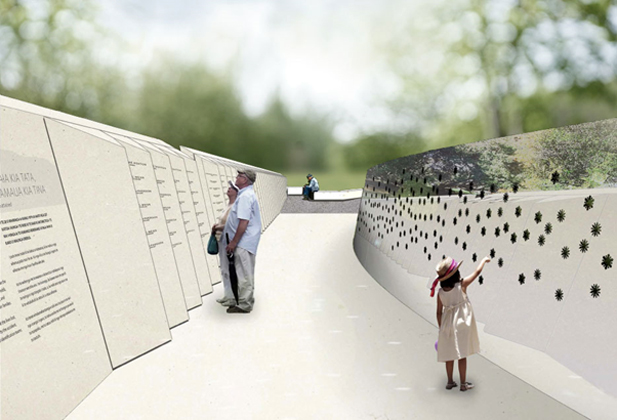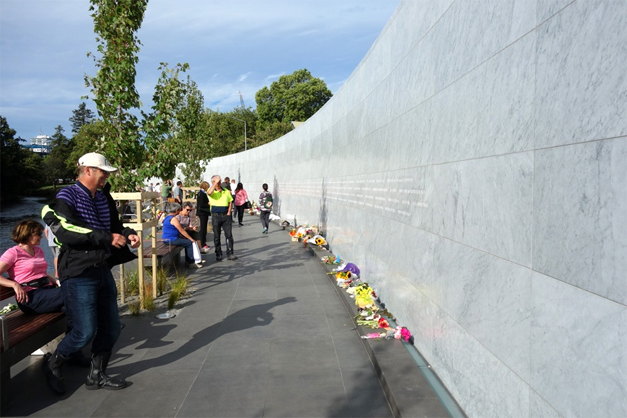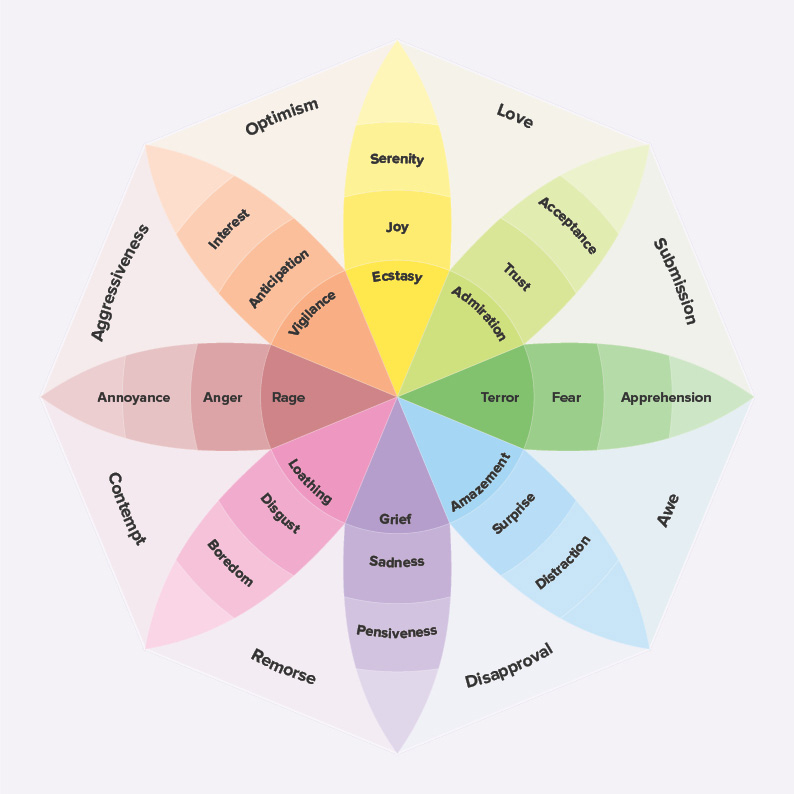Using this learning guide
This learning guide is not a downloadable resource to put in front of ākonga (students). Kaiako (teachers) should select from the guide and adapt suggested activities as they see fit to meet the needs of their students.
In this learning guide, ākonga will:
- Explore how and why we commemorate certain events from the past.
- Explore people’s views, values and actions with reference to the differing perspectives on a proposed national Erebus memorial.
Building memorials
In exploring historical significance, we asked who or what from our past we determine to be historically important. An associated idea is how we choose to express that significance. One way many societies demonstrate the importance of events and people from the past is through the construction of monuments in their memory. As sites of memory, memorials provide people with a place to gather and express a collective shared knowledge of the past. These sites can help reinforce a group’s sense of unity. If enough people care about the same thing, they can come together with a common purpose. Memorials sometimes emerge from political or civil crises during which national unity or morale has been at stake.
Susan Crane (University of Arizona) believes memorials can be important in both remembering and forgetting major events and historical figures. The nature of memorials and how they are perceived changes over time and across generations. Considering why we have memorials in the first place, Crane makes a comparison with the death of someone you care about. ‘People talk about having memorial services or a gravestone or a marker of some kind. The reason people want that is so that they have a location for their memories… I think the impulse is wanting to externalize the memory and the caring into some kind of physical object.’
What to do with markers of our colonial past? – Te Akomanga
Inquiry: New Zealand memorials register
New Zealand memorials register – NZHistory
The New Zealand memorials register contains information, accurate locations and images for over 1000 memorials throughout the country. The memorials register is an ongoing project to document New Zealand memorials. Many of the memorials commemorate wars in Aotearoa and overseas. First World War memorials account for nearly half of the register. The register also includes some peace memorials, memorials commemorating the victims of accidents, disasters and pandemics, and a few memorials relating to other events. The register can be searched by region.
Use the memorials register to look at memorials in your rohe (area). In small groups, discuss the following questions:
- What sort of events or people do these memorials commemorate?
- What are some of the characteristics of these memorials? What do they look like?
- How many of these memorials have you seen or visited?
- Do you think we should build memorials to people and events from the past? Why or why not?
- How can we appropriately acknowledge difficult memories from our past that some people would rather forget?
Inquiry: Oi Manawa Canterbury Earthquake National Memorial
Oi Manawa Canterbury Earthquake National Memorial
Canterbury Earthquake National Memorial – NZHistory
Oi Manawa Canterbury Earthquake National Memorial opened to the public on 22 February 2017, the sixth anniversary of the devastating earthquake of 22 February 2011 in which 185 people lost their lives. The memorial is a place to reflect on the earthquakes of 2010 and 2011 that changed greater Christchurch forever.
Divide ākonga into groups of 3-4, and get them to consider the following questions about the Oi Manawa Canterbury Earthquake National Memorial:
- Who or what is remembered by this memorial?
- What are the main features/characteristics of the memorial?
- How does this memorial make your group feel?
- Does your group think this memorial was necessary?
- Why is Oi Manawa described as a national memorial when it commemorates an event specific to Canterbury?
Proposed national Erebus memorial
At present there is no major public memorial to the Erebus accident on which all 257 names of those who died are listed. There are smaller memorials, including a commemorative sculpture at Scott Base, Antarctica.
On the 38th anniversary of the accident in 2017, Prime Minister Jacinda Ardern acknowledged that families and others had been seeking a national memorial for some time. She stated that it was ‘high time we as a nation formally recognised this tragic event. I believe it [a national memorial] is the appropriate thing to do … we have waited too long already.’ A national memorial would give relatives and friends a ‘place to put down their grief.’

Manatū Taonga Ministry for Culture and Heritage
In November 2018 Auckland’s Dove-Myer Robinson Park / Taurarua Pā, commonly known as the Parnell Rose Gardens, was selected as the site for the National Erebus Memorial. In April 2019 Paerangi ataata – Sky song was revealed as the preferred design. It had been chosen following feedback from family members of those who had died and from those who had worked on the recovery operation, and in consultation with Auckland Council.
Mt Erebus crash memorial, Scott Base – Te Ara The Encyclopedia of New Zealand
Opposition to the proposed memorial
There was some criticism of the memorial’s placement and style, and of the process through which its location had been decided. Before contractors could start work, a small group of protesters began an occupation of the site. They claimed that they did not oppose the idea of a memorial, just its location. This opposition became centred on the possible impact of construction work on a giant pōhutukawa, estimated to be between 140 and 180 years old, which overlooked the site, even though there were existing memorials around the base of the tree. Media coverage described how a ‘bitter battle’ over the proposed memorial had ‘divided families, iwi, politicians and the community.’
Storms in January and February 2023 had the final say. Slips on the cliff face below the proposed site compromised its safety. The decision was made in April 2023 to look for a new site for the National Erebus Memorial.
National Erebus Memorial – Manatū Taonga Ministry for Culture and Heritage
Search for a new location
The government remained committed to finding a place in Auckland for the memorial, if possible of the same design. Auckland remained the preferred location because:
- The largest proportion of the New Zealanders who died in the tragedy were from Auckland.
- Many Erebus families continue to live in Auckland.
- The flight departed from Auckland.
- Auckland is Aotearoa New Zealand’s major gateway for international visitors, so it would be easier for the families of overseas passengers who died on Flight TE901 to visit a memorial in the city.
Inquiry: Wheel of emotions
Analysing values, perspectives and decisions – Te Akomanga
Bitter battle over Erebus memorial splits families, iwi, politicians and community – Stuff
The dispute over the proposed Erebus memorial in the Parnell Rose Gardens aroused strong emotions in both supporters and opponents. Exploring people’s views, values and actions with reference to the head, heart and hand helps students build a well-rounded picture of what someone thinks and why they think it, and to understand their actions.
The Stuff article above outlines several perspectives on the proposed location of Paerangi ataata – Sky song in the Parnell Rose Gardens. Read the article in stages or in groups, discussing as you go. Reading strategies such as skim and scan can help ākonga identify key players and their perspectives.
See wheel of emotions resource and related prompting questions (PDF, 184KB)
Use the wheel of emotions to help you consider the following questions:
- What emotions can you identify from this article?
- Select a person or group from this article who supported locating the memorial at this site. Find a quote/statement that shows the emotions expressed by this person or group.
- Select a person or group opposed to locating the memorial at this site. Find a quote/statement that shows the emotions expressed by this person or group.
- How has learning about the initial plans for the proposed National Erebus Memorial made you feel?
- What other emotions/feelings could be added to this wheel?
Reflections on Erebus and its aftermath
David Allan lost both parents and a sister in the Erebus accident. He described the fight to overcome opposition to the memorial proceeding as planned as an ‘appalling saga’. He considers it ‘an indictment of our society that we can't bring ourselves together and build a memorial to our worst civil disaster ever. And we're still talking about it 40-odd years on.’ Like members of other Erebus families, he was disappointed with the news of further delays to the construction of the memorial. David Allan described the ‘last couple of years as having been unduly frustrating. It should not be such a complicated process’. Like dealing with the accident itself, he believed it was important to ‘just get up and get on with it and be positive.’ He was hopeful that a new site ‘could provide a clean slate’.
Writing at the time of the 40th anniversary of the accident in 2019, Michael Wright, one of the producers of the podcast White silence, wondered if ‘Erebus feels like something from the distant past, too hard to start confronting now.’ In his view, Erebus still matters. ‘It matters, of course, to the families of those who died, but it should matter a little bit to all of us that Erebus has been a sore allowed to fester in the side of the national psyche for 40 years.’ Wright believes that ‘if we are to better deal with our tragedies in the future, we need to talk about our worst-ever disaster in a more mature way.’
Inquiry: Personal reflections
In small groups, get ākonga to discuss the following questions:
- What do you think David Allan means when he talks of a ‘clean slate’?
- What do you think makes someone or something nationally significant enough to justify a memorial?
- Is it too late to build a national Erebus memorial? Write down your group’s thoughts and be prepared to share them with the rest of the class.
- Other than a physical memorial or monument, how else might we remember significant events from our past?
- Do you think there should be a national commemoration of the Erebus accident on 28 November each year? Give three reasons for and against this idea.
Comparison with other memorials
Napier Earthquake Memorial – NZHistory
Tangiwai Memorial – Manatū Taonga Ministry for Culture and Heritage
Pike River memorial stone – NZHistory
There are other memorials commemorating events from New Zealand’s past in which there was considerable loss of life. As well as Oi Manawa Canterbury Earthquake National Memorial, memorials commemorate the victims of the Hawke’s Bay earthquake, Tangiwai rail disaster and Pike River mining disaster.
Inquiry: Other memorials
Have your class consider the following question, then have ākonga pair up and share their thoughts:
- Why do you think it was possible to build the above memorials in a timely manner, but not a memorial to those who died in the Erebus accident? Has a national Erebus memorial ended up in the ‘too hard basket?’



Community contributions